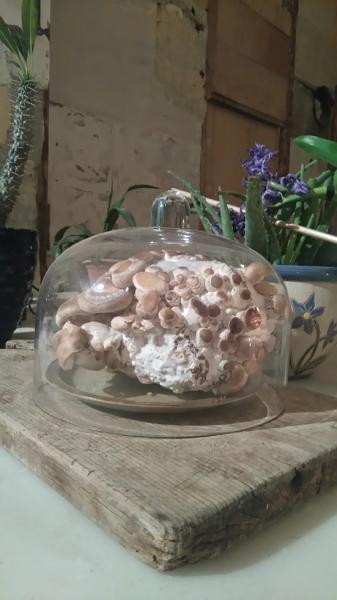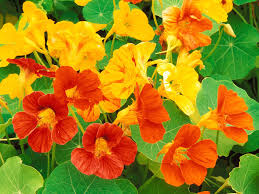Papaya – what is it anyway? Is it a fruit of the tree or of the ground? Is it eaten green or orange?
Papaya is a fruit, it has seeds. It is a perennial herbaceous plant with a single stalk that can reach a height of up to eight meters, similar to the thickness of a tree trunk. Also, in the sense of kashrut, it is not considered a tree in terms of Orla.
When ripe, a papaya is sweet, soft and buttery… One can understand why Columbus called it "the fruit of the angels" when he “discovered” it in its continent of origin, Central America.
It was transferred quickly to other tropical countries, where it bears fruit all year round. In East Asia it is eaten green and considered the most basic vegetable. It was once difficult to find it elsewhere, but now it grows in most of the world, and grows very fast from seed or cuttings. In Israel, until several years ago, papaya was rare, but this week it is already included in our organic fruit baskets!!
In Israel, we developed a new species called the Aurora, which is seedless and considered especially delicious and healthy! It is already well known in the world and it is considered a high quality Papaya, easy to work with in the kitchen and valuable to health.
Wait … Have I already told how healthy it is, and how it requires no special preparation? Let's start from the beginning…
Papaya Carica from the Caricaceae family.
The Papaya originates from Central America and is considered an ancient food of Native American. Columbus, and thereafter the Spanish and the Portuguese quickly spread it to Asia and other tropical locations.
The Papaya plant grows quickly and the fruits can be eaten green or orange – either ripe or immature. This is not bad! It is like squash and cucumbers, which are the immature members of the gourd family, as opposed to pumpkins, which are fully matured fruits that we eat ripened, with seeds in a state ready to germinate and continue the species… but that’s for another newsletter :). Maybe next week.
The papaya fruit begins dark green on the outside and white on the inside. At this stage it is referred to as a vegetable. In South Asia, papaya in this stage is a primary vegetable. It blends well in cooking, pickling, spicy salads… in South America it is used in the salsa (actually, also when orange). It is peeled and the inner flesh is grated. It can also be cooked and Is delicious!
After several weeks the color slowly changes to yellow and then to orange, in its fully ripened state. When orange, the flavor is so sweet that you can just give it a bite 🙂 although it is also very suitable in shakes, fruit salad, ice cream, smoothies, etc. Its seeds are also good to eat. They are chewy and are especially "peppery" and full of papain. They can be used for seasoning.
The papaya is very rich in antioxidants, vitamin C, vitamin A, folic acid, potassium, magnesium and fiber. When it is ripe, the sugar in it is lower on the glycemic index, so it is also suitable for diabetics.
In addition to it being rich in all these, the papaya is quite unique in the quantity of the enzymes papain and chimopapain. These are enzymes that break down proteins into amino acids. The papain is used as a tenderizer and softener of protein-rich meats. Our bodies typically need to carry out this process in order to acquire the amino acids necessary for us from the proteins we ingest. As we get older, our ability to break down protein diminishes.
The papain and chimopapain cause the digestive process to be more efficient and rapid, thereby increasing the nutritional yield of our food. When digestion is faster, removal of waste and toxins from our body is more quick and efficient.
Including papaya in a meal will help us in the digestion process. Adding diced green papaya to a meat stew, for example, will make the dish easier to digest.
Papain also works together with the many antioxidants in papaya and increases their efficiency and effectiveness. Accordingly, it prevents the buildup of cholesterol and its sediment in the arteries. Cholesterol sediment in the arteries causes blockage and lessens the blood flow…
The papaya has proven to help prevent cancer (colon in particular) and is an aid in the process of recovery from cancer.
Papaya is considered to be anti-inflammatory. It accelerates healing and eases joint pain like arthritis. It facilitates and helps in situations of asthma.
So how do you eat it:
It is ready to eat as it is! Green as a vegetable, orange as a fruit 🙂
Green as a vegetable – great for cooking – peel and cut into cubes. Cook in soups, as stew, stir fry, etc. Use it with seasoning, legumes, beans, meat…. whatever you want. Papaya is great with everything and absorbs flavors. It is also good in a vegetable salad: peel and grate with a grater or food processor, along with whichever other vegetables you like and season as you wish. Green papaya contains more enzymes and less vitamins and sugar than ripe papaya. A word of warning, the liquid of the green papaya is irritating to the eyes.

Orange as a fruit – eat it like melon or in salsa with chili pepper and ginger.
Papaya recipes, not that you need any :), eat it just as is!!
Recipes from Walla http://food.walla.co.il/item/2800526
A nice presentation on papaya 🙂 https://www.youtube.com/watch?v=RMfRq5UcT1w
Today is the summer solstice – the longest day of the year. Enjoy the great weather outdoors.
Lavrioot! Yours,
Maggie and the garden staff.
We expect in our weekly organic veggie baskets (draft only) :
Butternut Squash
Tomatoes
Cucumbers
Lettuce
Turnip
Kale
Leeks
Potato
Peppers
Parsley
Large organic vegetable baskets also :
Swiss Chard
Eggplants
Garlic Chives
Zucchinis
Organic Fruits Basket ( draft only) :
Ppaya
Nectrines
Larger ones also:
Melon
and more Nectrines











